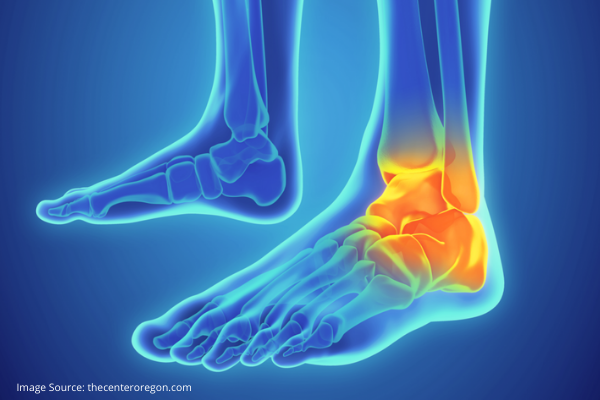

FIRST AID FOR SPRAINED ANKLES

There is a good chance that even as you are reading this you are remembering a prior incidence where you had sprained your own ankle too. Ankle injuries are common injuries and an estimated 25,000 occur daily; sometimes it’s just a minor twist and you walk on after a little bit of hobbling, other times you hear a ‘pop’ and the injury is severe enough to make you keep your weight off it. The ankle could get swollen and painful. Most probably you have stretched or even torn the ligaments in your ankle. This is called an ankle sprain.
Strains on the other hand are injuries to the muscles due to overstretching. Both strains and sprains occur more often during the teen years, and less often in younger children.
Sometimes ankle sprains can be severe and need long-term rest, depending on the number of ligaments that were injured and how often the ankle keeps getting injured. Sports people often end up with such injuries, especially footballers when they are tackling the ball and the ankle rolls outwards while the foot is turned inwards.
When it’s a mild sprain, the ankle will be tender, swollen or stiff, but you can usually walk on it a little. A more serious sprain has additional bruising, warmth, and tenderness, making walking painful; a severe ankle sprain has all of the above but makes it impossible to walk as the ankle keeps giving out and is extremely painful. Such an ankle injury would most probably require a hospital visit for checking the extent of injury. Some ankle injuries require surgical correction for dislocation or shattered joints.
But most ankle injuries are minor and can be taken care of at home itself. Follow the simple R.I.C.E. routine for a Grade I sprain and things should be fine after a couple of days.
Rest your ankle and don’t attempt putting weight on it. Use crutches if necessary but with the additional support of an ankle brace. This also helps in controlling swelling as well as adding stability to the healing ligaments.
Ice the area regularly for the first 48 hours to keep the swelling under control. Ice for 15-20 minutes every 2 hours but do wrap the ice pack inside a cloth to prevent frost bites.
Compression is needed to control the swelling as well as to immobilize the injured area. A crepe bandage tied not too tightly around the ankle to provide a squeezing effect would do the job. Splints or cast can also be recommended depending on the extent of the injury.
Elevate the foot above the heart level as soon as possible after the injury to reduce flow of blood to the injured area. This helps in reducing pain, swelling and inflammation.
The injury usually subsides within a few days, but for Grade II and III injuries, longer periods of rest and treatment may be required.














